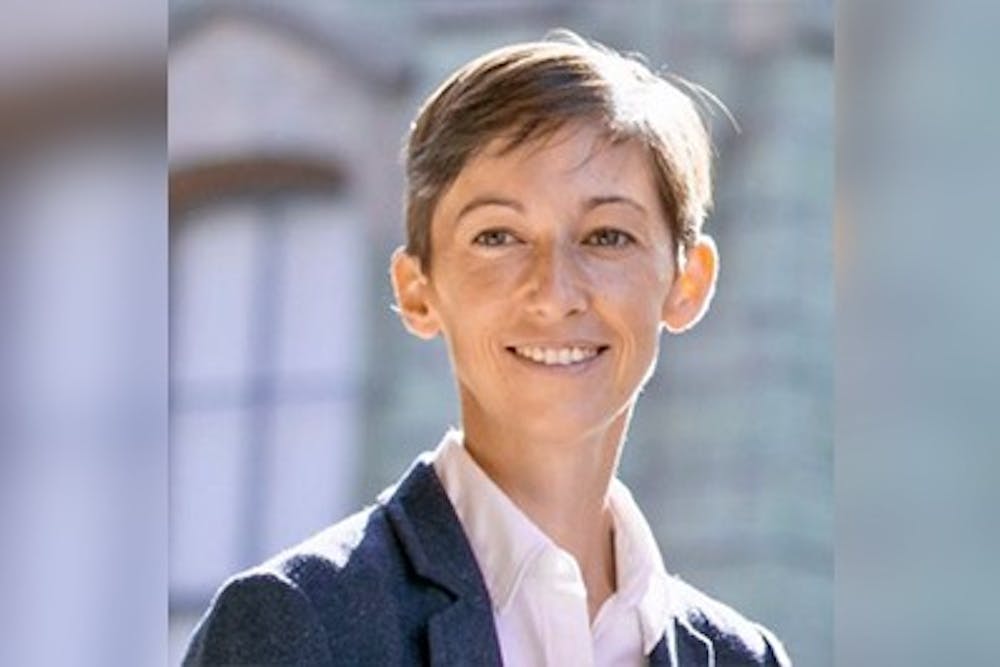A Penn professor and their identical twin will be discussing their book “Curious Minds: The Power of Connection" on Dec. 9 at the Penn Bookstore.
Dani S. Bassett, a professor of bioengineering at Penn, will join their twin Perry Zurn, an associate professor of philosophy at American University, to talk about the process behind writing the book — which was released in September.
Bassett said that the pair developed the idea for the book seven years ago while Zurn was studying the philosophy of curiosity and Bassett was researching the neuroscience of learning. The twins saw potential connections between their respective research projects and realized the potential for meaningful engagement.
Over the past seven years, Bassett and Zurn have written 23 papers together. They view “Curious Minds” as the culmination of that research — one that posits a new theory of curiosity.
Bassett noted that existing definitions of curiosity tend to be individualistic, explaining curiosity as “a single person searching for a single piece of information” that they are able to acquire and own.
Bassett and Zurn said that they view curiosity as a collaborative pursuit with interconnected pieces of information building a bigger picture. The twins alternated being the primary writer of each chapter and also edited and expanded upon each other’s chapters.
This method resulted in “a dialogue between philosophy and science," Bassett added. “This was purposeful to show how the two fields can be integrated meaningfully."
Zurn believes that the book's interdisciplinary nature develops a comprehensive exploration of curiosity.
RELATED:
Wharton Dean Erika James talks new book, crisis leadership in interview with the DP
Wharton professor Peter Fader explores the "Customer-Base Audit" in new book
“In higher education, a lot of times fields will strictly police their boundaries,” Zurn said. “But we can’t approach deep problems and questions like ‘What is curiosity?’ without all the resources that all the disciplines can bring to the subject. We’re really trying to model that in our work.”
In addition to their mission to break down disciplinary boundaries, Bassett said they were motivated by what they feel is a lack of a clear definition of curiosity among scholars.
“There’s still a lot of interesting work that’s happening in the field of curiosity, but there’s also a deep sense that we’re not really sure what we’re studying,” Bassett said. “That was a really neat motivation for me to engage with philosophy to see if we can bring a philosophical definition of curiosity into science to help us create better experiments.”
Throughout the book, Bassett and Zurn identify several different archetypes of curiosity, including the busybody, hunter, and dancer. The busybody has an interest in everything and everyone, the hunter has a few in-depth interests, and the dancer has creative, imaginative expressions of curiosity, according to Zurn.
With the book, they hope to help readers better unpack, understand, and appreciate their own curiosity as well as the curiosity of the people around them.
“When we’re curious, we’re both building knowledge networks in our minds and also connecting those networks to other minds,” Zurn said. “I would love people to come away from the book with a new appreciation for curiosity as a social practice.”
Bassett emphasized that the book is heavily illustrated to reflect some of the different forms that curiosity can take. At the beginning of each chapter, intricate illustrations created by United Kingdom-based artist Poonam Mistry foreshadow the ideas present in the chapter.
Bassett also incorporated their own informal sketches into the science chapters. Their art, they said, was designed as if they “were drawing on a napkin in a coffee shop to illustrate the ideas to someone [they] were talking to.”
“The visual art reflects both the formal long-term construction of curiosity in Mistry’s art and the short-term informal construction of curiosity in the sketches,” Bassett said.
Bassett found that the authors’ connection as twins extended into the book’s writing itself.
“Since we were kids, we’ve had an uncanny ability to understand what the other person is thinking and feeling,” Bassett said. “In the process of writing the book, we’ve realized that it’s a new language that we now have in common.”
Zurn further emphasized how his close relationship with Bassett helped the pair fuse their ideas.
“Being twins has helped us come together from really disparate fields and find resonances in those fields,” Zurn said. “We can follow each other’s thoughts even when the other isn’t talking, and that relationship has made the work much deeper than otherwise would have been possible.”









